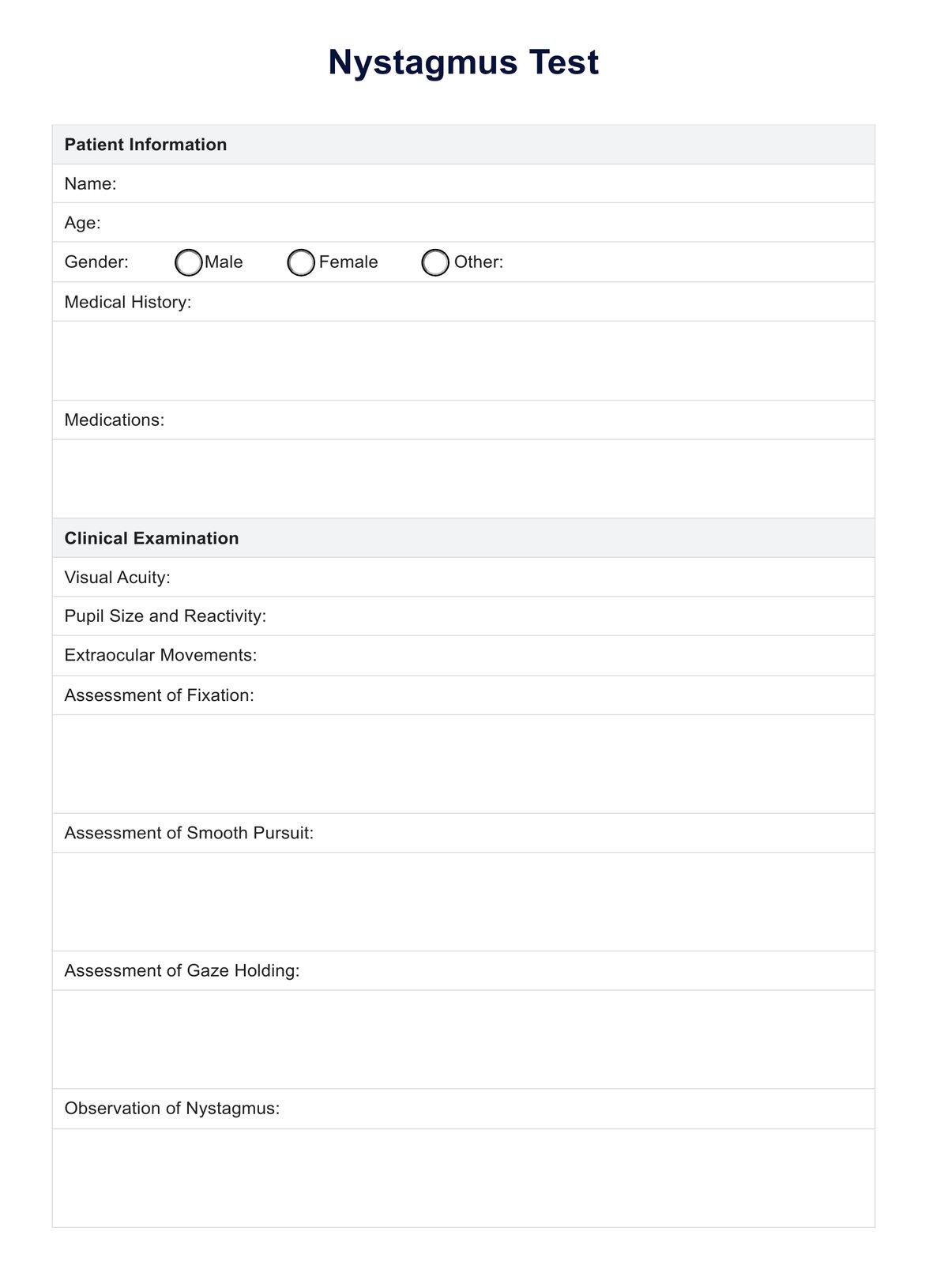Nystagmus is typically tested using the Horizontal Gaze Nystagmus (HGN) Test, where the eyes track horizontal gaze at a moving object.

Nystagmus Test
Discover the Nystagmus Test: A diagnostic tool examining involuntary eye movements. I'd like you to please learn its significance and implications in vision health.
Use Template
Nystagmus Test Template
Commonly asked questions
Signs and symptoms of nystagmus include rapid, involuntary eye movements, which may be horizontal, vertical, or rotational.
The clinical examination of nystagmus involves assessing eye movements, including direction, frequency, and amplitude, often using tools like Frenzel goggles or an ophthalmoscope.
EHR and practice management software
Get started for free
*No credit card required
Free
$0/usd
Unlimited clients
Telehealth
1GB of storage
Client portal text
Automated billing and online payments











